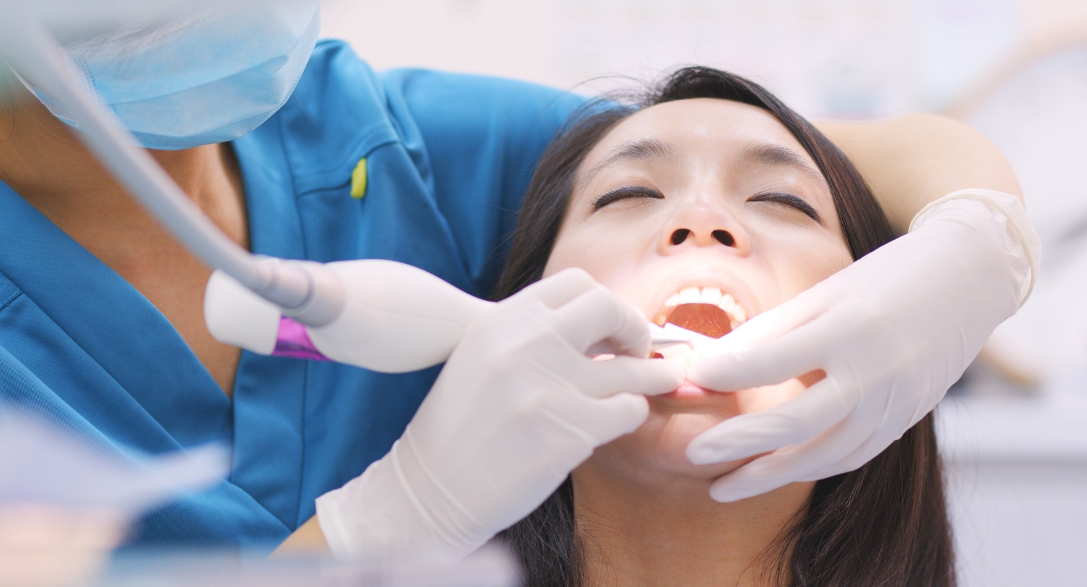Pay Online
Periodontal Therapy Explained: How It Helps Save Your Teeth and Gums

Did you feel a sharp pain in your gums while biting into your favorite fruit or snacks?. There is a chance that you might be experiencing the early stages of gum disease. This might also be indicated by other signs such as bleeding, sensitivity, etc. Ignoring it will only worsen your condition.
Seeking timely care can reverse the damage to some extent. Read this blog to learn how periodontal therapy can help you save your teeth and gums from disease-causing bacteria.
Why Does Gum Health Matter?
Gum disease creeps up on you very quietly, with symptoms such as puffy gums or minimal bleeding. Without treatment, it can escalate, leading to gum recession, teeth, and bone loss.
Gums also serve as a defense mechanism by keeping bad bacteria out of your body. When they get inflamed, these bacteria can enter your bloodstream and cause a variety of systemic health issues, like diabetes, heart disease, etc.
Steps of Periodontal Therapy
Wondering what exactly happens during a periodontal therapy in Bedford? Here’s what you’ll likely go through:
- The periodontist or dentist will examine your gums, check the pocket depths, and your teeth. They might take X-rays to check the extent of bone damage.
- Then they will deep clean your gums with special equipment, scraping away stuck plaque and tartar beneath the gumline. This allows the gums to reattach to the teeth.
- On some occasions, the dentist may apply topical antibiotics or prescribe special mouthwashes to eliminate lingering germs.
- In severe cases, surgical intervention such as flap surgery or bone grafting might be necessary to replace lost gum tissue and bones.
- After the initial treatment, regular checkups and cleanings are essential to prevent gum disease from recurring.
Why Periodontal Therapy Works?
Periodontal therapy can stop the early stages of gum disease from progressing and help those with severely damaged gums. Here’s how it works:
- This dental procedure reduces Inflammation by eliminating irritants and soothes inflamed, bleeding gums.
- Early treatment helps preserve the bone that supports your teeth and prevents tooth loss.
- The removal of disease-causing bacteria makes your breath smell fresher and improves the taste in your mouth.
- Timely treatment of gum disease is often linked with reduced risks of heart disease and improved blood sugar levels in individuals with diabetes.
When Should You Seek Periodontal Treatment?
This particular can affect you without initially causing noticeable pain. Gum disease usually progresses silently. Look for these warning signs:
- Persistent bad breath
- Easily bleeding gums
- Red, swollen, or painful gums
- Receding gumline or teeth appearing longer
- Loose or moving teeth
Simple Habits That Support Lasting Results
Periodontal treatment is effective, but your daily routine counts as well. Here’s how to keep your gums healthy:
- Brushing twice a day with a soft toothbrush.
- Floss daily or use interdental brushes.
- Use a mouthwash that the dentist has suggested.
- Eat a healthy diet filled with vitamins and minerals.
- Steer clear of tobacco products, as they worsen gum disease.
If you’ve been putting off that dental appointment, consider this your sign. Periodontal therapy is a proven, research-backed way to protect your teeth, gums, and overall well-being. This procedure can do more than just protect you from tooth loss,
Are you ready to give your gums the care they deserve? Schedule a consultation today!



